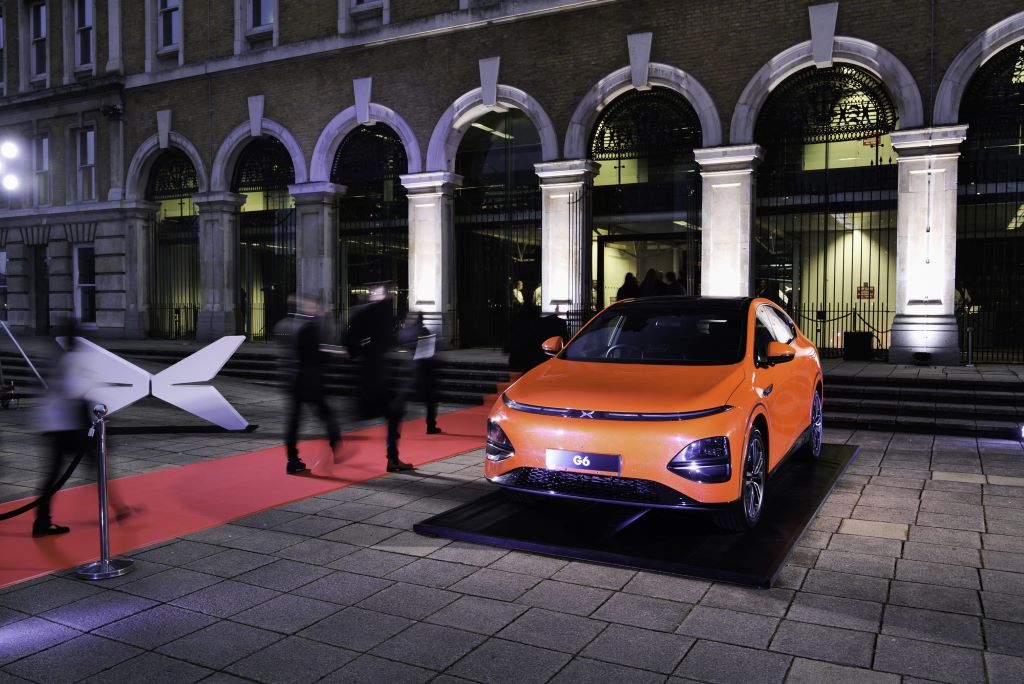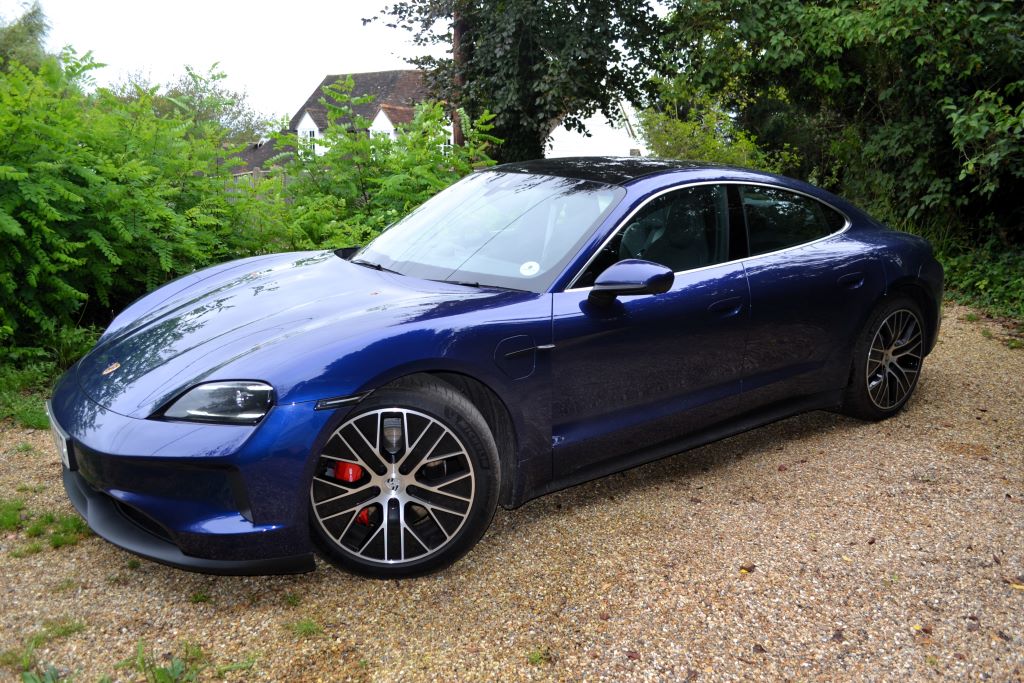Feature 12 min read
Chief Executive Officer of Connected Kerb Chris Pateman-Jones talks exclusively with Discover EV about the UK’s charging infrastructure
According to a study by the Policy Exchange think-tank, 365,000 public charge points will be needed to meet demand in 2030. We talk to one of the UK's leading providers of electric chargers to talk about the Electric Vehicle charging infrastructure and what’s required to meet net zero.
1. While there are 25,000 electric charging points in the UK right now, the CMA estimates at least ten times more will be needed by 2030 to meet upcoming demand, do you honestly think this is achievable?
I do, but I actually think you need more than that. The Policy Exchange (thinktank) came up with a figure of 480,000 public chargers required, and frost and Sullivan came up with 2.9m for a full transition from ICE to EVs. The actual number of public charge points required depends on how many EVs there are on the road by 2030. That higher figure is probably not far off for total transition.
One of the reasons behind the elevated figure of the analysts versus the government is because the analysts are including those who can’t charge at home. Convenience is the number one factor in switching to an EV and reliability is number two, with affordability number three. Home charging beats public charging on all of those.
I think it a step change in terms of what local councils are doing is needed. There are some leading lights out there like Kent and Sussex, Coventry and Cambridge – but there needs to be an uplift in terms of size, scale and speed of deployment of charge points. In addition, what we do deploy needs to last.
The worry at the moment is that if you look at a lot of charging solutions that are out there, of the c.20k that have been deployed to date, almost all will need to be replaced before 2030. That isn’t sustainable, and it means you’ll end up deploying far more than the 300,000 being talked about.
2. What do you see as the single biggest obstacle to achieving a charging infrastructure that’s adequate by 2030?
I'm going to pick two, if that's okay?
Firstly, the scale of the ambition is one and that is changing rapidly. This time last year, Connected Kerb would’ve been running around jumping for joy for a commission of 30 charge points. Now we’ve signed one contract for 7000, so things have changed. These are extremes, but we are seeing clients rapidly increasing the scale of their ambition.
And the reason? Last year, clients were dipping their toe in the water and seeing if we were as good as we said we were. A number have concluded that we are so these have turned into much larger commissions. As well as simply testing us, there’s also a growing realisation within councils of the importance.
For a long time, the thought was that if owners wanted to own an EV, they’d have to put up with driving down the road to use a charging point. There’s a growing recognition that this isn’t fair and if we want EV [transition] to happen, that isn’t going to work [for people without home charging].
The second obstacle is education – both educating the population and in the infrastructure context, educating the councils on the economics of EV charging. This manifests itself with things like tender lengths. Releasing a tender for 10 years won’t yield good responses, meaning to make a return you’re going to have to rip consumers off.
The way to deliver on infrastructure that will last and deliver, you need longer contracts. Ours are 15 years with the option to extend for five and that makes the economics work. Longer contracts will reduce cost even further. We realise that for councils this isn’t their main priority, but Office for Zero Emission Vehicles (OZEV) is doing a lot of good work on educating councils and we’re also releasing guidance to help with education.
3. What’s the one biggest thing that the national and local government, investors, developers, and charging point providers could all do to ensure the UK is able to deliver?
I think a combined effort on education – that would be the single thing. This is both the myth-busting piece for consumers and the workforce education, especially around deployment.
We think there’s huge opportunity with the telco [telecommunications] industry on this. Our COO has come from the telco industry and worked on EE’s 4G network as well as the emergency services network in the UK. We’re also working towards creating a city and guilds qualification for EV installation – training is going to be key.
4. Rural areas in the UK risk being left behind thanks to slow roll-out plans from local authorities as do people who live in communities of high-rise buildings – how can this be solved?
I often hear people say that it’s like the telco industry with regards getting fibre internet to rural areas, but it’s a bad analogy. There was no fibre so you had to install it, but there’s a pretty good electricity network that goes out to rural areas so there’s no reason why we can’t deploy chargers.
In Kent we’re deploying across all the parish councils. In West Sussex there’s a county-wide project that will go into rural communities, so it’s already happening. We also have a project with Lambeth Council putting charge points into council estates around tower blocks, and we hope it’s going to be expanded. Access to charging points whether you’re in a poorer area or a wealthy one should not be discriminating.
The key to all of this is data and understanding why you deploy to where you deploy [charge points]. We’ve built a system that helps with site selection and can predict usage, average commuting distances on a residential street, wealth profile and all kinds of different things. This helps us inform councils where deployment will be most impactful.
If you’re talking short-term contracts, everyone would deploy in High Street Kensington as that’s where everyone has the money. But on a long-term contract it’s a bad location as the people live near great transport connections and they don’t drive far. For a long-term contract you might deploy in a poorer area where commuting distances are higher.
5. There is a serious lack of competition and choice for consumers at present. How do you see this changing?
Competition is an interesting one. There’s some competition around physical tenders – so installing the infrastructure – and then there’s the consumer side where you’re providing something for users. The nature of convenience means that if a charger is outside your home, you’re more likely to use it, even if it’s more expensive than one five mins away.
The way we deal with it is we’re trying to focus on our three principles of affordability, reliability and convenience, regardless of what our competitors are doing. We think the project on Agile Streets – by using tech to adjust charging and take advantage of cheaper price times or more renewables – has been very successful in providing affordability. We try and remove tariffs for connection costs and membership fees, and don’t understand why those are so prevalent as we want everyone to use our chargers. We don’t want any barriers in the way.
In terms of apps, my view is that apps aren’t as bad as some people say they are, especially in certain locations. In a motorway service station, I don’t want to have an app as I want to turn up and tap and go because there’s no benefit in that setting. There’s no intelligence in the charging – it’s basically pump it as fast as possible and get out of there.
In a residential setting where I use charging two or three times per week, the app has many benefits. If we’re able to look at people’s charging habit data, we can offer massive benefits including cost savings, better reliability and better use of energy. It’s important that visitors to an area can still use the infrastructure, so roaming agreements are important.
6. What about providers who sting you with cost if you’re not a member, don’t have an app, etc.?
This is where the CMA will come into play. At Connected Kerb we want charging to be so mundane that nobody thinks or talks about it, but they do get excited about the offers that we can provide, so route planning, scheduling and booking charging. I think some of the big operators that won’t do roaming and enforce high price for non-members could start having fairness controls enforced at some point. It’s what’s happening with Tesla and Gridserve, and the government is likely to start pushing for it in due course.
7. A lot of people opt for Tesla because of the charging infrastructure it has – should charging points be exclusive to certain brands or types of EV charger types and how could you stop manufacturers/providers from doing this?
I think in the long term when EVs are ubiquitous, most of the closed networks will open up – from purely an economic perspective. I think it’ll be difficult for the government to step in in instances where a brand finances the hardware and it’s a private setting. That’s why motorway service stations are tricky – because they’re not public owned assets. In council and residential locations you’ll never get privately owned assets in the same way.
What you will get is a continuation of sponsorship and you’ll get manufacturers doing deals with networks to get cheaper or preferential charging for their car owners.
8. Even with existing chargers, there can be problems with reliability. If we’re all to make the switch this won’t be sustainable. What is the solution?
Current infrastructure isn’t built to last – it’s built with an asset replacement mindset rather than a repair and maintenance mindset. For most chargers, key failure point is the socket and the cable. If a socket breaks on our system, it can be replaced – not the whole charging point. The rest of our charge point system is also modular so it can be replaced or upgraded.
There are a lot of charging points out there that simply won’t last more than seven years. Our Assure Charge project uses data to predict when elements of our network might fail, which enables us to better schedule maintenance and repair work. We cluster our charge points so if one fails on a residential street, we bring forward the maintenance for the entire street. We hope other providers will copy this way of thinking.
9. Getting adequate power to existing sites, which are often rural, to support high-speed charging facilities, can be highly expensive – how will service areas get around this?
The national grid won’t cope if we deploy dumb chargers. If you do the agile street work with power management, there’s the opportunity not only to stop it from failing, but also to support the grid. Because we know our consumers through our app and our technology, we can forecast our user profiles and behaviours. If the grid is constrained, we can ramp down charging without affecting user experience – especially as our chargers are long dwell chargers. You can’t do this with ultra-rapid or rapid chargers where people want to charge as quickly as possible.
There’ is enough power and while substantial upgrading is required, the biggest challenge is who pays for it, and how do they pay for it. There are very clever and collaborative people within UK Power Networks who are on top of this, however.
10. How much will the technology in EVs play a part in reducing charging times and thus increasing the number of people who can charge at one site?
Most people won’t charge most of the time on ultra-rapid chargers, so whilst developments in this area (such as 350kW capability) are important, longer dwell time charging will still dominate. In terms of efficiency, this is why there needs to be so many new connections – because there’s a limit to the efficiency you can have, but there’s a lot more than is currently being delivered.
We’re moving to a future this where infrastructure utilisation is much higher. There has to be a realisation that if someone plugs in at 7.00pm, they’re not going to move their car at 1.00am so in our setting, it’s about what we can do during that time – how can we modulate charging speeds.
We need to modify behaviours. This is where apps come in handy as we could target a percentage of our userbase to plug in, or not plug in, at certain times depending on demand – offering them a discount to charge when availability is higher. This can be done through forecasting load, and is effectively part of manipulating load on the grid.
11. And lastly what is Connected Kerb doing to help lead the change with mass deployment of EV charging infrastructure?
190k chargers is the number we’re targeting and it’s a big number. We’ve contracted 12k chargers with over 4k public chargers going in before the end of 2022. We’ve got some new developments coming up in both public and private spaces as well.
Whilst some might think the 190k figure is insane, we believe it’s imperative due to the issues we’ve already discussed in terms of what’s required. In all of those we’re going to double down on affordability, reliability and accessibility. We’re expanding the final part into disability, including working with disability partners such as Motability to achieve more disabled-friendly charging.
We think we do things in the right way, so if we succeed, we think it will pull some other parts of the network with us, so I hope we continue to win in terms of contracts to deliver public charging. We’ll certainly continue to innovate to stay ahead of the curve and hope that things continue has they have been doing.


 Convenience is the number one factor in switching to an EV, reliability is number two, affordability number three
Convenience is the number one factor in switching to an EV, reliability is number two, affordability number three  There are many obstacles that stand in the way of delivering an infrastructure that will last and deliver
There are many obstacles that stand in the way of delivering an infrastructure that will last and deliver  Myth busting and education are the biggest factors in ensuring the UK can deliver
Myth busting and education are the biggest factors in ensuring the UK can deliver  The Gecko is creatively designed to fit to existing street furniture, such as parking posts or bollards (Credit: Connected Kerb)
The Gecko is creatively designed to fit to existing street furniture, such as parking posts or bollards (Credit: Connected Kerb)  The Agile Streets project intends to demonstrate the use of a smart metering system to manage public EV charging sustainably (Credit: Connected Kerb)
The Agile Streets project intends to demonstrate the use of a smart metering system to manage public EV charging sustainably (Credit: Connected Kerb)  The CMA has secured commitments from Gridserve which will unlock competition and increase choice of electric vehicle charge points on motorways for drivers
The CMA has secured commitments from Gridserve which will unlock competition and increase choice of electric vehicle charge points on motorways for drivers  Tesla is set to expand access to its Supercharger network to all electric cars
Tesla is set to expand access to its Supercharger network to all electric cars  A project to improve the performance of EV chargers, the Assure Charge project, has launched following a successful award of a collaborative bid with research and testing facility PNDC and Connected Kerb (Credit: Connected Kerb)
A project to improve the performance of EV chargers, the Assure Charge project, has launched following a successful award of a collaborative bid with research and testing facility PNDC and Connected Kerb (Credit: Connected Kerb)  Smart charging (ie enabling drivers to charge when energy is cheapest) can save people money, benefits the grid as it helps manage demand and maximises the use of renewable electricity
Smart charging (ie enabling drivers to charge when energy is cheapest) can save people money, benefits the grid as it helps manage demand and maximises the use of renewable electricity  Connected Kerb say they could use apps to help modify charging habits
Connected Kerb say they could use apps to help modify charging habits  The Chameleon is a new bollard-style charging point from Connected Kerb and is currently one of the lowest impact and smallest dual charger solutions for public on-street charging in the market
The Chameleon is a new bollard-style charging point from Connected Kerb and is currently one of the lowest impact and smallest dual charger solutions for public on-street charging in the market 



1024px.jpg)



Comments (0)
Be the first to write a comment
Login/ Signup